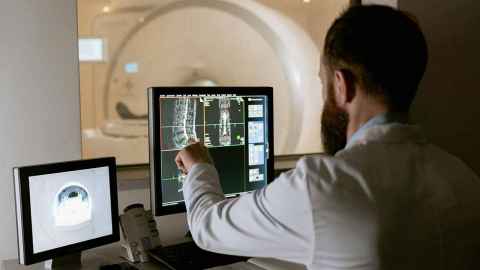Positron Emission Tomography-Computed Tomography (PET-CT)
PET-CT uses radioactive tracers with a combination of molecular and anatomic imaging to assist with the diagnosis and treatment of diseases.

Subject overview
PET-CT is a patient-centred profession that integrates aspects of health sciences and evolving imaging technology. As a PET-CT health professional, you will utilise your knowledge of human physiology, pathology, technology, physics and chemistry in order to obtain images of optimal quality. These images provide both structural and physiological information on almost any organ of the body.
PET-CT requires a high level of professionalism and functioning as part of a multidisciplinary team that works together to ensure holistic patient care. Increasing demand on clinical imaging services and rapidly evolving technology provides ongoing educational opportunities.
The University of Auckland offers the only PET-CT qualification in New Zealand. Graduates of the Postgraduate Certificate in Health Sciences (PET-CT) will be eligible for registration of restricted practice in PET-CT with the regulatory body, the New Zealand Medical Radiation Technologists Board (MRTB), as an extension to their scope of practice.
Where can PET-CT take you?
PET-CT technologists work primarily in Nuclear Medicine and/or Radiology Departments within a limited scope unless they have completed other qualifications to practise in the full Nuclear Medicine scope.
Graduates can also enrol in the PGDipHSc (Nuclear Medicine) to further their studies.